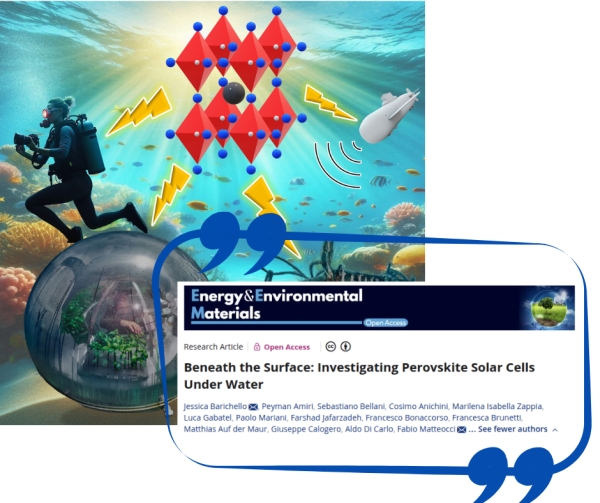The idea behind the study stems from a precise physical observation: water absorbs certain wavelengths of sunlight, allowing primarily those between 400 and 600 nanometers to pass through.
Perovskite solar cells—next-generation photovoltaic materials—can be engineered specifically to harness this portion of the light spectrum.
“Our tests show that, even just a few centimeters below the surface, the panels can maintain or even improve their performance thanks to natural cooling and the optical effect of water,” explains Jessica Barichello of CNR-ISM.
The research team is also developing encapsulation systems to protect the devices from the marine environment, studying materials and solutions that prevent lead leakage and mitigate biofouling phenomena.
With a Technology Readiness Level (TRL) of 4, CNR-ISM’s research aims to demonstrate the feasibility of underwater photovoltaics capable of powering:
- environmental monitoring sensors and systems;
- drones and autonomous vehicles for marine exploration;
- coastal sustainable infrastructures.
This innovation represents a step forward toward a broader and smarter use of solar energy, in line with the objectives of Italy’s National Recovery and Resilience Plan (PNRR) and the ecological transition.
The nomination for the 2025 SMAU Innovation Award recognizes the value of research that combines scientific expertise, advanced experimentation, and positive environmental impact—confirming the role of CNR-ISM and the NEST project as key players in the sustainable energy and advanced materials sectors.
More information at: https://doi.org/10.1002/eem2.70069


 English (UK)
English (UK)  Italiano (Italia)
Italiano (Italia)